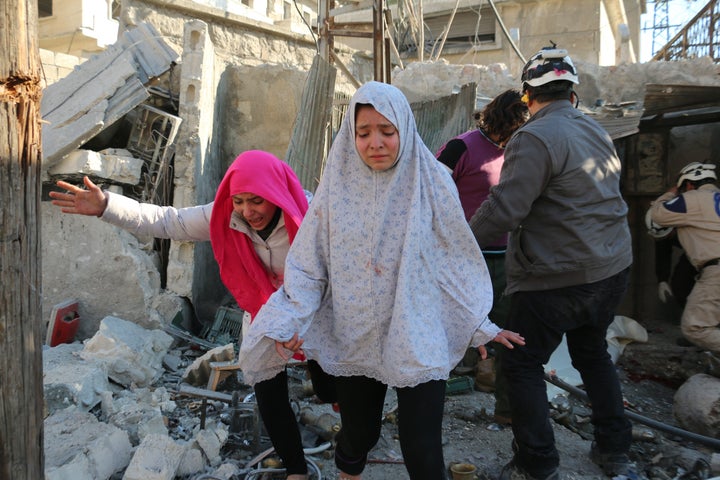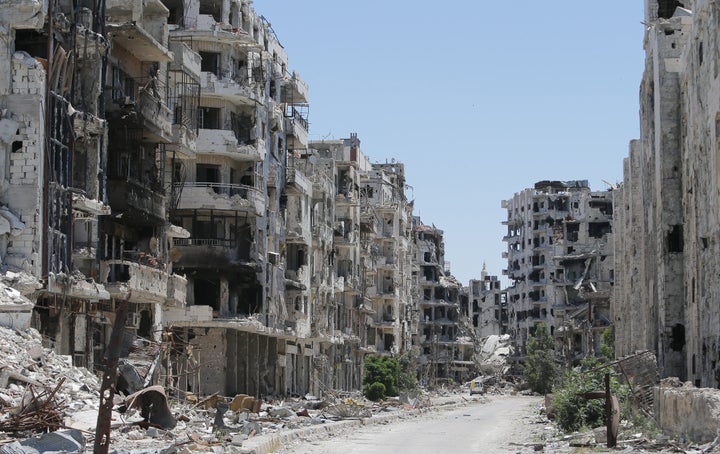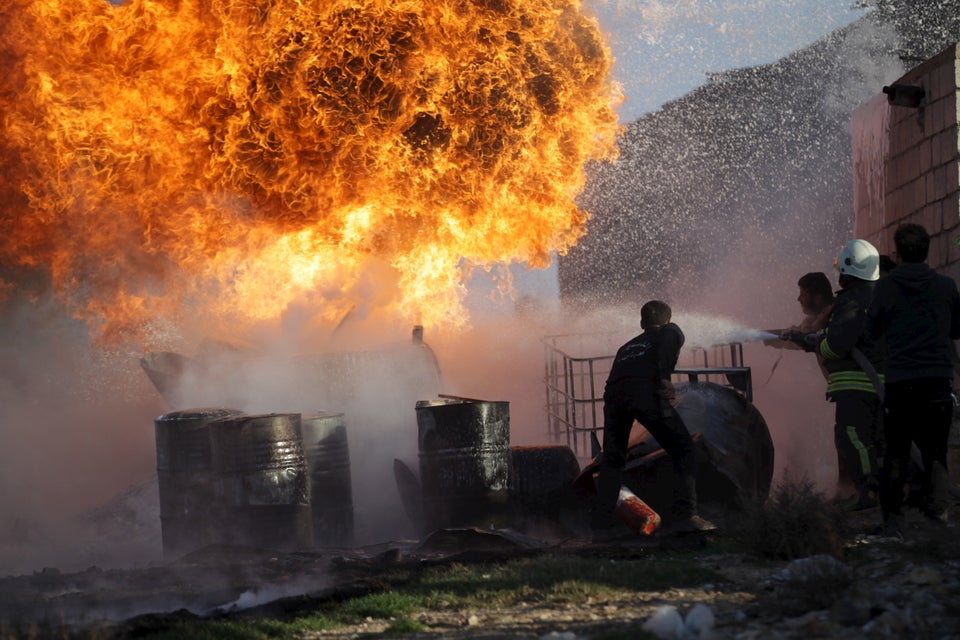
The rebel-held Syrian city of Aleppo is close to being completely encircled after forces in support of President Bashar Assad's regime seized key areas to its north this month. Heavily supported by Russian airstrikes, government soldiers along with Hezbollah and Iran-backed fighters now look to cut off the city, and with it thousands of civilians who remain in Aleppo.
The growing likelihood of Aleppo being surrounded is a devastating prospect for Assad's opponents, and threatens to escalate the city's humanitarian crisis. The fighting around the city for the last few months has already forced tens of thousands to flee to Turkey, which has kept a main southern border crossing closed despite the surge.
As the battle for Aleppo continues, analysts say there are also worrying parallels with the government's strategy toward the Syrian city of Homs, which endured years of blockades, bombings and starvation after it was besieged in mid-2012.
“It's exactly the same strategy. What they did in Homs, they are doing now in Aleppo,” Fabrice Balanche, a visiting fellow at The Washington Institute for Near East Policy think tank, told The WorldPost.
“They’re cutting the supply roads, they’re surrounding the rebels and they’re waiting,” he says.

In Homs, Syrian opposition forces took control over significant areas of the city after anti-government protests gave way to an armed uprising against the Assad regime in 2011.
The Syrian government responded with major offensives to retake Homs and lay siege to rebel-held neighborhoods the following year, but opposition forces were able to receive supplies along routes from nearby Lebanon that allowed them to keep fighting. The turning point came when the Assad government managed to completely cut off these routes and isolate the rebels in 2013.
"It started to close the border with Lebanon with the help of Hezbollah, and when it was not possible for the [rebel] fighters to bring in support from North Lebanon they were finished," Balanche says.

The ring road that surrounded Homs became a barrier that prevented the rebels' movements in and out of the city, as rebel-held areas like the Old City were sealed off.
Thousands of civilians who were trapped in these neighborhoods suffered through starvation and bombardment. Medical facilities, electricity and water were shut down.
When civilians were finally able to leave amid ceasefire deals in 2014 and 2015, they were malnourished and in poor physical condition. Many reported seeing family members killed or eating grass and cats to survive.
Civilians in the last rebel-held neighborhoods of Homs were finally evacuated in December amid a cease-fire deal, and the city is now essentially in the hands of the government.

In Aleppo, the Syrian government appears to be following a similar playbook. Forces loyal to the Assad government have tried for years to retake the city, as well as weaken its inhabitants by dropping barrel bombs over rebel-held neighborhoods. These attempts failed, however, and as recently as last summer it appeared opposition forces were gaining ground.
This changed in October 2015, as Russian airstrikes and increased support from Iranian-backed forces proved to be deciding factors in the government advance. Earlier this month, a turning point in the fighting came when the Azaz corridor that connects supply routes from the Turkish border into eastern rebel-held Aleppo was cut off.
Even more than Homs, which many regarded as the capital of the revolution, losing Aleppo would be a disaster for the Syrian opposition. Before the war the city was the largest in Syria, and remains one of the most important rebel strongholds and is a symbol of the opposition.
Now, separated from their main supply lines, rebels in Aleppo are fighting a desperate battle to prevent being totally isolated. Analysts say that once that happens the fighters will likely entrench themselves in urban areas where the power of Russian airstrikes is lessened, and the fighting will drag on.
Civilians in Aleppo who aren't planning on fleeing are already planning for the fallout of a siege. People are stockpiling food and fuel, if they aren't gathering supplies to flee, residents told The Associated Press.
On Tuesday, the United Nations Office for the Coordination of Humanitarian affairs warned that up to 300,000 people in Aleppo could be cut off from aid if the city is encircled.
Also on HuffPost:

